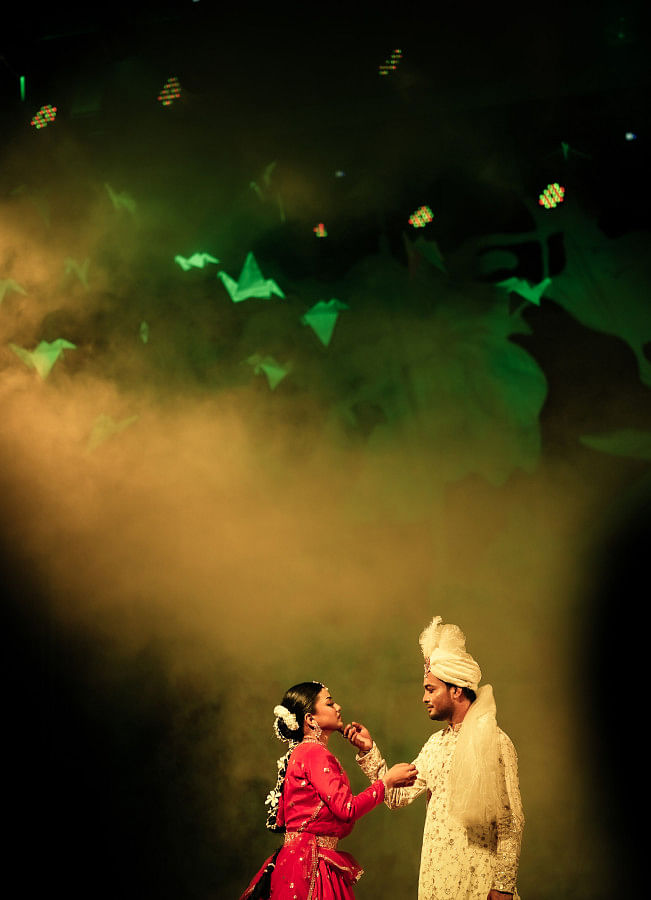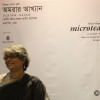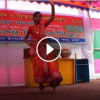Drawing from Sufi philosophy and fusing classical and contemporary dance traditions, Dilnawaz offers not just a spectacle, but an experience of the soul's deepest longings. Produced by Shadhona and directed by Lubna Marium, this performance revives a forgotten fable from Urdu literature, bringing to life the story of a slave girl, whose journey through love leads her to spiritual transcendence.
Drawn from the lost but resurrected short story by Rahat Ara Begum, a writer whose pen was once silenced by political divide. The production charts the inner odyssey of a handmaiden in a royal court. Dilnawaz, the humble slave girl, traverses the perilous terrain of longing and surrender, her love for an oblivious prince becoming her gateway to spiritual transcendence.
Her journey, told in seven movements that echo the seven stages of Sufi love, is anything but servile. Attraction (hub), Infatuation (uns), Love (ishq), Trust (akidat), Worship (ibadat), Madness (junoon), and finally, Annihilation (fana) — each stage strips away another layer of self, until only pure essence remains.
Through a deft fusion of the Mugham dance traditions, Indian classical Kathak, and the sinuous rhythms of contemporary jazz, the dance drama embodies the universal yearning for union; not merely with the beloved, but with the Divine.
It is no accident that Rahat Ara Begum — herself a practicing Sufi in 1940s Kolkata — wove this mystical thread into her only foray into mythic storytelling. And it is fitting that her granddaughter, Lubna Marium, would spend ten patient years nurturing this vision, culminating in six intense months of rehearsal to bring Dilnawaz to the stage.
"Not a dry eye in the hall," Marium recalls, but she stood firm for the story, and demanded nothing less than total devotion.

Mubasshira Kamal Era, who embodies Dilnawaz, delivers a performance that goes beyond dance; it becomes ritual. Her portrayal captures heartbreak and ecstasy in equal measure, her body a vessel for emotions that words cannot contain.
"For a whole 10 minutes, I just spun," she says. "I was in a trance. The claps, the awe in the audience, I could feel them, though they didn't reach me. My body was just in a trance, something I felt from within."
That moment, a solitary figure spinning, lost in divine madness, became the production's heartbeat. Era's own journey adds another layer of poignance: once driven away from dance by bullying, she returned years later to stand before an audience of over 700, everyone on their feet, caught in collective rapture.
Dilnawaz is not content with mere narration. It communicates, blending classical rigor with contemporary freedom, weaving South Asian and Middle Eastern traditions into a single fabric. Each movement, each gesture, is charged with the sacred duty of conveying the ineffable. It is this alchemy that has left audiences spellbound and hearts unguarded.
As Lubna Marium puts it, "Performance transcends the world through art. With Dilnawaz, we present a story of love, devotion, and mysticism, weaving together South Asian and Middle Eastern performance traditions."
At a time when art is often reduced to entertainment, Dilnawaz reclaims the stage as sacred space. It reminds us that love, in its truest, most transformative form, is both the path and the destination. Like the Sufi seekers before her, Dilnawaz dances not for applause, but for annihilation. And in doing so, she invites us to shed our own layers, to spin until we too, touch the eternal.
Photo: Courtesy








Comments